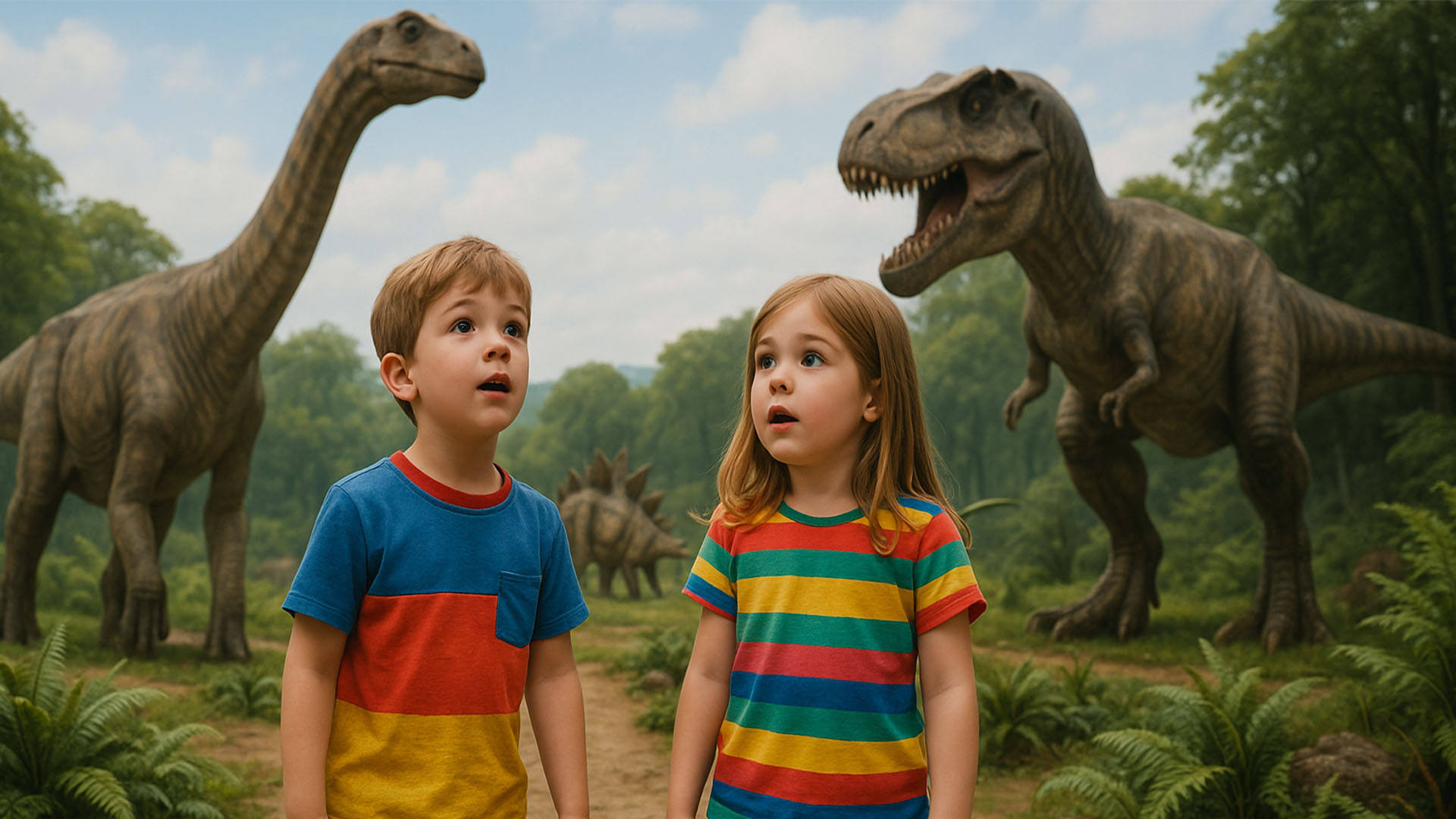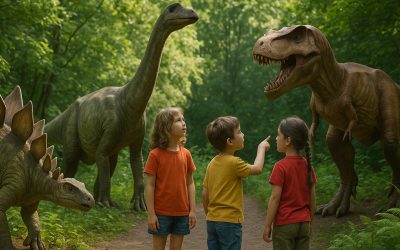Dinosaurs, those magnificent creatures that roamed the Earth millions of years ago, continue to fascinate children and adults alike. From the towering Brachiosaurus to the fearsome Tyrannosaurus Rex, their story is one of incredible diversity, adaptation, and ultimately, extinction. Join us on an exciting journey back in time to explore the prehistoric world and uncover the secrets of these ancient giants.
What Were Dinosaurs?
Dinosaurs were a diverse group of reptiles that lived during the Mesozoic Era, which lasted from about 252 to 66 million years ago. The word “dinosaur” comes from the Greek words “deinos” (terrible) and “sauros” (lizard), meaning “terrible lizard.” However, not all dinosaurs were terrible; many were gentle herbivores. They varied greatly in size, shape, and diet, adapting to various environments across the globe.
When Did Dinosaurs Live?
The Mesozoic Era is divided into three periods: the Triassic, Jurassic, and Cretaceous. Dinosaurs first appeared in the Triassic Period (about 252 to 201 million years ago). They became the dominant land animals during the Jurassic Period (about 201 to 145 million years ago), a time when many of the largest dinosaurs, like the Apatosaurus and Stegosaurus, roamed. Their reign continued through the Cretaceous Period (about 145 to 66 million years ago), which saw the rise of iconic dinosaurs such as the Triceratops and Tyrannosaurus Rex.
How Do We Know About Dinosaurs?
Our knowledge of dinosaurs comes primarily from fossils. Fossils are the preserved remains or traces of ancient life. Paleontologists, scientists who study fossils, excavate these remains from rocks. By studying dinosaur bones, teeth, footprints, and even fossilized eggs, they can piece together information about how dinosaurs lived, what they ate, how they moved, and even what they looked like. [1]
Why Did Dinosaurs Disappear?
Most scientists believe that dinosaurs, along with many other forms of life, became extinct about 66 million years ago at the end of the Cretaceous Period. The most widely accepted theory is that a large asteroid, about 6 to 9 miles wide, struck Earth near what is now the Yucatán Peninsula in Mexico. This impact caused widespread devastation, including massive wildfires, tsunamis, and a thick cloud of dust and debris that blocked out the sun, leading to a global cooling event and the collapse of ecosystems. [2]
Fascinating Dinosaur Facts
- Longest Dinosaur: The Argentinosaurus is believed to be one of the longest dinosaurs, possibly reaching lengths of over 100 feet. [3]
- Smallest Dinosaur: Compsognathus was a small, carnivorous dinosaur, about the size of a chicken.
- Dinosaur Eggs: Dinosaurs laid eggs, much like modern birds and reptiles. Fossilized nests and eggs provide clues about their reproductive habits and parental care.
- Feathered Dinosaurs: Recent discoveries have shown that many dinosaurs, especially theropods (the group that includes T-Rex), had feathers. This discovery provides strong evidence for the evolutionary link between dinosaurs and birds. [4]
Q&A About Dinosaurs
Q1: What was the biggest dinosaur?
A1: While it’s hard to say definitively, the Argentinosaurus is often considered one of the largest, weighing up to 100 tons and stretching over 100 feet long.
Q2: Did humans live with dinosaurs?
A2: No, humans did not live with dinosaurs. Dinosaurs died out about 66 million years ago, while the earliest humans appeared much more recently, only a few million years ago.
Q3: Are birds dinosaurs?
A3: Many scientists consider birds to be modern-day dinosaurs, as they are direct descendants of feathered dinosaurs.
Q4: What did dinosaurs eat?
A4: Dinosaurs had diverse diets. Some were herbivores (plant-eaters), some were carnivores (meat-eaters), and some were omnivores (ate both plants and meat).
Sources
[1] National Geographic: https://www.nationalgeographic.com/science/article/dinosaurs
[2] Smithsonian Magazine: https://www.smithsonianmag.com/science-nature/what-killed-dinosaurs-180970630/
[3] Natural History Museum: https://www.nhm.ac.uk/discover/argentinosaurus-facts.html
[4] American Museum of Natural History: https://www.amnh.org/dinosaurs/feathered-dinosaurs








0 Comments